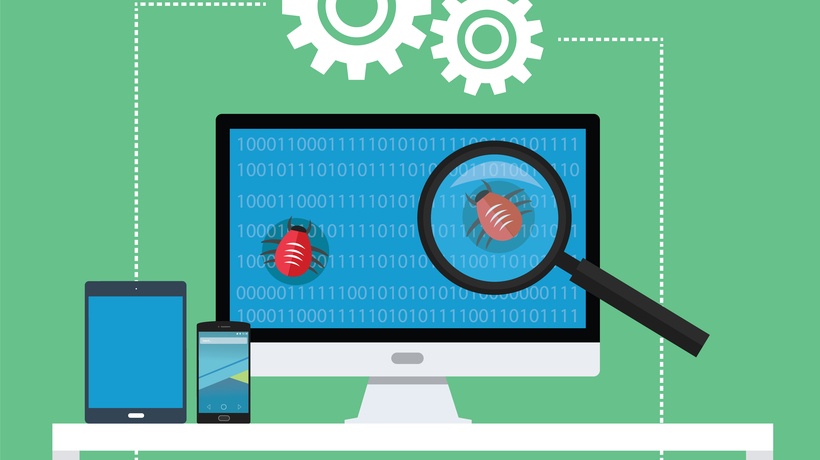What Is The Quality Assurance Of eLearning?
The current educational and technical society is hard at work building learning solutions that will make education accessible to all people as part of their effort to ensure a knowing future. As a consequence of this, the conventional educational system has already expanded far beyond the confines of traditional institutions of higher learning, such as colleges and universities. Several eLearning firms have made it a top priority to include rigorous software testing in the workflow. This is done with the goal of preventing software failures.
Automated software testing service companies will just not guarantee an uninterrupted flow in the product's operation, they even ensure that the User Experience is enhanced. They work together with your team to develop a strategy that is entirely tailored to the needs of your software testing. The pillars upon which quality assurance testing services are seen are dependability, efficiency, and knowledge. They are very concerned about maintaining the confidentiality of any and all intellectual property and even the privacy of their stored customer data.
What Exactly Is Meant By "eLearning Testing"?
The process of determining whether or not certain learning activities are successful is referred to as eLearning software testing. It is used in a wide variety of learning situations, ranging from public schools to private businesses. Testing in eLearning is done to assess whether or not the learning goals have been fulfilled, as well as whether or not the activities associated with learning are reaching the objectives. Testing for eLearning may be carried out in a number of different methods, the most common of which involves making use of a control group and an experimental group.
When implementing eLearning in the workplace, businesses and other organizations may run into a number of challenges related to the creation of courses, technology, and other related topics. This article will provide you with an overview of the most significant obstacles that might arise during the implementation of eLearning, as well as the most effective solutions to those problems.
What Sets eLearning Software Testing For Quality Apart From Other Types Of Testing?
There is a significant need for testing eLearning systems at the moment. This is due to the fact that eLearning software testing investigates an extensive variety of functionality and working problems inside the EdTech software and apps. These checks start straightaway with the use of visual content and go on from the organization of tests, the paring of communication material, and the general essentials of courses.
When doing quality assurance tests for eLearning software, testers are required to take into account the learnability factor, which requires additional checks on the accessibility, usability, and experience of the program. If these variables cannot be streamlined, it might lead to misunderstandings between the learner and the eLearning platform, which increases the risk of losing business to rivals. This testing is a methodical procedure that involves doing an examination of the degree to which the program achieves its objectives, the amount of mental strain it requires of the user, and the efficacy with which it handles faults. The testers who participate in conventional software testing are often considered to be experts in the fields in which they are testing, in contrast to the testers who participate in eLearning software testing, who are not. Testing of eLearning software, on the other hand, is based on human factors.
The process of learning never ends. Technology provides the most effective means of education. There is a plethora of software and mobile applications available to assist with the learning process. These items are intended to make your experience more enjoyable, participatory, and productive in every possible way. They make it possible for you to study more quickly and efficiently. EdTech applications and software may be utilized in a variety of settings, especially in workplaces.
The Importance Of Quality Assurance In eLearning
eLearning quality assurance, most often abbreviated as "eLearning QA", refers to the method through which we monitor and enforce standards. It guarantees the delivery of an exceptional product for training purposes. Despite this, quality assurance tests need to be performed to ensure that students will have a productive and pleasurable learning experience free of grammatical or factual mistakes. Below, we will go over some of the benefits that go into selecting the ideal software testing partner for your organization.
1. Generate Reviews And Monitor Bugs
The easiest method to get all of the stakeholders involved in quality assurance is to make it simple for them to provide input and report issues. You, as the course creator, are aware of what should be evaluated, but the people that assess your course may not be. Make sure you offer them some pointers on the kind of input you're looking for in each cycle of the review, as well as how to deliver that feedback.
2. Profit To The Max
It is not hard to see why the market for eLearning testing is such a profitable one in today's environment. It is anticipated that the revenue generated by the eLearning testing industry will reach $20 billion by the year 2020. This is due to the fact that the sector is always expanding, which has resulted in a need for innovative and contemporary testing procedures. There are many kinds of eLearning assessments, but the ones that are administered on computers and use adaptive testing software are by far the most frequent. Programmers are responsible for developing these examinations that are dynamic in nature and adapt according to the respondent's performance on the questions. The use of an eLearning application results in an increase in the number of leads and sales.
3. Appropriate Functioning Of Tools
If you have internal staff that is knowledgeable and experienced in eLearning, developing eLearning content might become much simpler for you. Working with reputable external vendors that are knowledgeable in eLearning creation, have access to the appropriate authoring tools, and have experience generating high-quality courses for corporate training is the best option if you do not have an internal team of developers at your disposal. Therefore, a company has to hire professionals skilled in automated software testing in order to create online courses and check to see if there are any errors.
4. Compatibility Test
It is essential that all aspects of the User Experience be considered, from a variety of devices, given that not all users or students have access to the same devices, browsers, and functioning systems. Nevertheless, testing a program across a broad variety of screens can be a challenging task. Automation, on the other hand, makes the testing process much easier while producing extremely accurate results. Automation not only helps save time but also helps save money. It is simple to put into action and may be carried out in a number of different ways.
Conclusion
Outstanding eLearning calls for a variety of abilities and attributes, including strong project management, instructional strategies, effective programming skills, graphic design knowledge, talented voiceovers, and strong editing skills. If the team has done all of these things correctly, an effective automated eLearning software testing approach will be able to offer the perfect eLearning that functions well in all circumstances.









